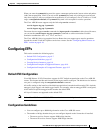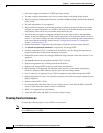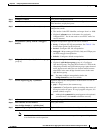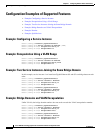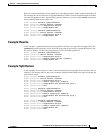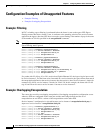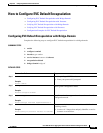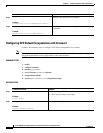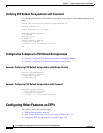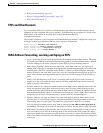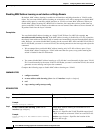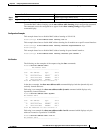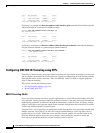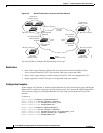
8-15
Cisco ASR 901 Series Aggregation Services Router Software Configuration Guide
OL-23826-09
Chapter 8 Configuring Ethernet Virtual Connections
How to Configure EVC Default Encapsulation
Verifying EVC Default Encapsulation with Bridge-Domain
To verify the configuration of EVC default encapsulation with bridge-domain, use the show command
shown below.
Router# show running-config interface gigabitEthernet 0/9
Building configuration...
Current configuration : 210 bytes
!
interface GigabitEthernet0/9
no ip address
negotiation auto
service instance 1 ethernet
encapsulation default
bridge-domain 99
!
end
Step 3
interface
type number
Example:
Router(config)# interface
GigabitEthernet0/4
Specifies an interface type and number, and enters interface
configuration mode.
Step 4
service instance
instance-id
ethernet
Example:
Router(config-if)# service instance 10
ethernet
Creates a service instance on an interface and defines the
matching criteria.
• instance-id—Integer that uniquely identifies a service
instance on an interface.
Step 5
encapsulation default
Example:
Router(config-if)# encapsulation default
Configures the default service instance.
Step 6
xconnect
peer-ip-address vc-id
encapsulation mpls
Example:
Router(config-if-srv)# xconnect 1.1.1.1 100
encapsulation mpls
Binds an attachment circuit to a pseudowire, and to configure an
Any Transport over MPLS (AToM) static pseudowire.
• peer-ip-address—IP address of the remote provider edge
(PE) peer. The remote router ID can be any IP address, as
long as it is reachable.
• vc-id—The 32-bit identifier of the virtual circuit (VC)
between the PE routers.
• encapsulation—Specifies the tunneling method to
encapsulate the data in the pseudowire.
• mpls—Specifies MPLS as the tunneling method.
Command or Action Purpose



